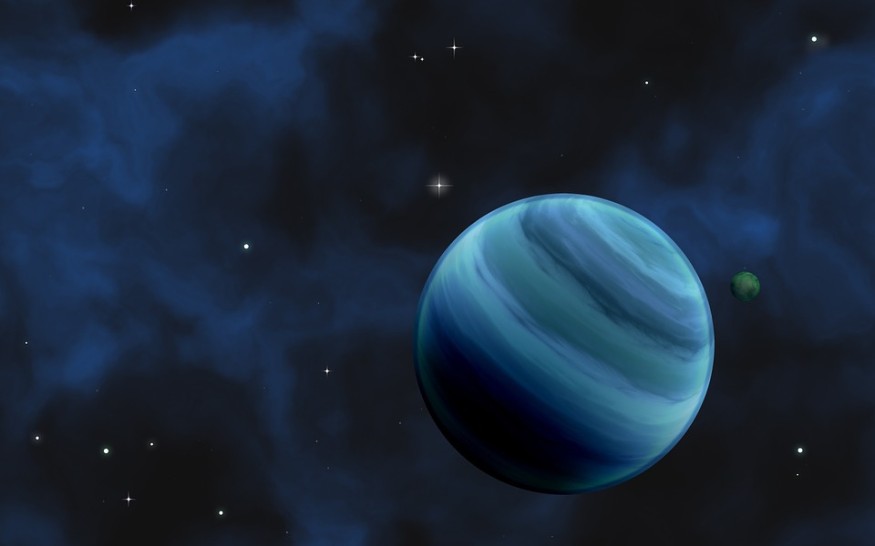Mini-Neptune exoplanets are widespread in the Milky Way and are recognized as the most common type of exoplanet even though there are none in the Solar System. The James Webb Space Telescope (JWST) has prioritized the study of exoplanets and has made significant progress in this field, including the discovery of the well-known TRAPPIST-1 system with seven Earth-sized worlds.
While the search for habitable planets remains a focus, there is much more to explore, such as the formation of planets, the evolution of their atmospheres, and the reasons for the prevalence of certain exoplanet types that are not found in the Solar System. Given the multitude of exoplanets available for investigation, astronomers utilizing the JWST carefully select their targets, leading one team to focus on studying the mini-Neptune GJ 1214 b.

First mini-Neptune With an Atmosphere
Using the James Webb Space Telescope's MIRI and Low-Resolutions Spectrometer, researchers conducted observations on the mini-Neptune planet known as GJ 1214 b. Their findings were published in a Nature paper titled "A reflective, metal-rich atmosphere for GJ 1214b from its JWST phase curve," with lead author Eliza Kempton from the University of Maryland.
According to Science Alert, GJ 1214 is a red dwarf star located approximately 40 light-years away in the Ophiuchus constellation. The MEarth Project discovered its only planet, GJ 1214 b, using the transit method in 2009.
Subsequent observations with the Hubble Space Telescope suggested that the planet possesses a thick steamy atmosphere, making it a water world. It is about eight times the mass of the Earth and has a radius of approximately 2.75 times that of Earth.
In the published paper, the authors stated that the planet's mass and radius indicate a composition primarily consisting of water, enveloped by a hydrogen-helium layer that constitutes only 0.05% of the planet's mass. They also noted that the planet's atmosphere is likely undergoing hydrodynamic escape, suggesting significant evolutionary changes over time.
GJ 1214 b was the first mini-Neptune with a detected atmosphere and only the second one for which mass and radius were determined. However, detailed observations were hindered by the planet's thick layer of haze or clouds. Hence, astronomers sought to utilize the JWST to further investigate this intriguing exoplanet.
Kempton emphasized that the planet's atmosphere had remained completely concealed until this recent observation. Researchers focused on the planet during its transit, tracking it throughout nearly an entire orbit, utilizing the JWST's MIRI instrument. This allowed them to create a heat map of the planet, revealing details about its atmosphere on both the day and night sides.
Night and Day in the Mini-Neptune
Over a span of approximately 40 hours, the telescope observed the planet, capturing various noteworthy findings. The news release via UChicago News reported that GJ 1214 b has one side permanently facing the star and the other in constant darkness. However, despite this asymmetry, heat is still circulated throughout the planet via its dense atmosphere.
By analyzing the data extracted from the telescope, the researchers generated a temperature map of the planet as it completed its orbit around the star. Heat transport differs based on the composition of heavier and lighter molecules, allowing scientists to gain insights into the atmospheric makeup.
The team determined that GJ 1214b contains a significant proportion of elements slightly heavier than hydrogen, which could potentially indicate the presence of water, methane, or a combination of both.
Additional research is needed to accurately ascertain the atmospheric composition of the planet. Nevertheless, the evidence collected suggests a strong likelihood of significant water content.
RELATED ARTICLE: 'Mini-Neptune' Exoplanets With Puffy Atmospheres are Transforming Into Super-Earths; How Is This Possible?
Check out more news and information on Exoplanets in Science Times.
© 2025 ScienceTimes.com All rights reserved. Do not reproduce without permission. The window to the world of Science Times.











